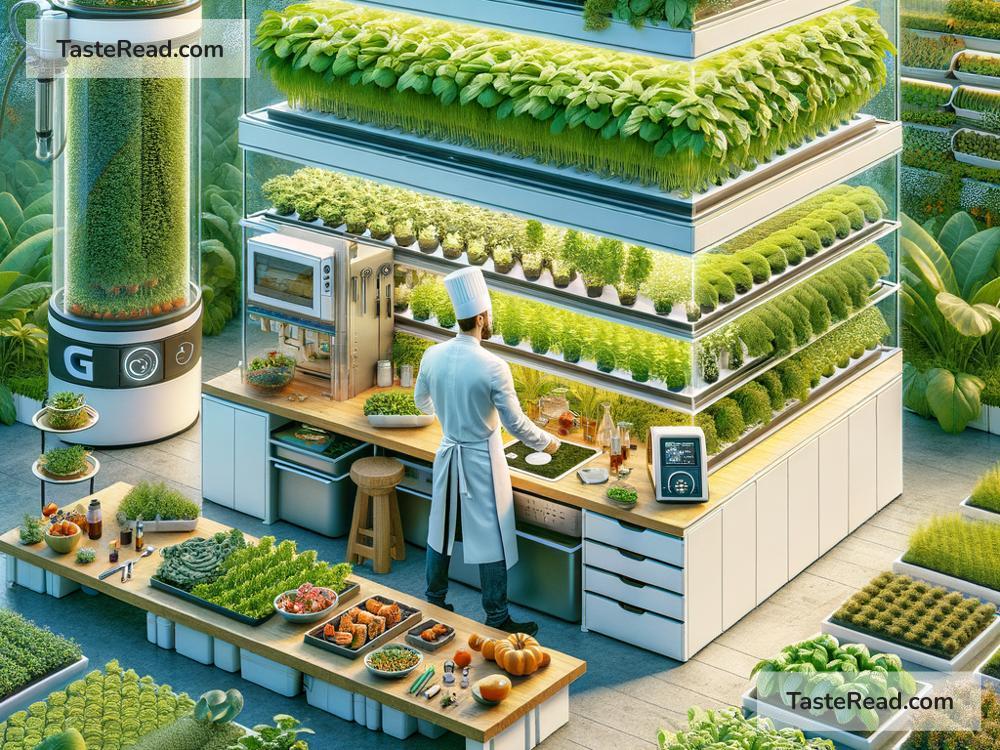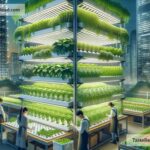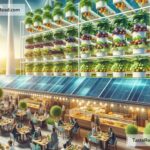The Future of Food and Ecosystem Services: A Path Towards Sustainability
Food is one of the most important parts of our lives. It fuels our bodies, connects cultures, and brings people together. But the way we grow, produce, and consume food is rapidly changing. At the same time, our planet’s ecosystems—forests, rivers, oceans, and more—are under pressure like never before. As we look to the future, it’s clear that our food system and ecosystem services must evolve hand in hand to ensure a sustainable and healthy world.
Let’s explore what the future of food might look like and how it’s tied to preserving ecosystem services.
What Are Ecosystem Services?
Before we dive in, let’s first understand ecosystem services. These are the benefits that nature provides to humans, often for free. For example:
- Pollination: Bees and other insects help plants grow fruits, vegetables, and nuts.
- Clean Water: Wetlands filter water, keeping it safe for drinking and farming.
- Air Quality: Forests absorb carbon dioxide and release oxygen, improving air quality.
- Soil Health: Healthy soil produces crops, stores nutrients, and reduces erosion.
Our planet’s ecosystems are like invisible workers, ensuring that we have clean water, fresh air, and enough food to eat. Protecting these services is critical to the future of food production.
Challenges We Face
The world’s population is growing fast. By 2050, there will likely be nearly 10 billion people on Earth. Feeding everyone will be a massive challenge, especially as climate change, pollution, and deforestation threaten our ecosystems. Some key issues include:
-
Loss of Farmland: Urbanization, desertification, and deforestation are reducing the amount of land available for agriculture.
-
Declining Biodiversity: As animal and plant species disappear, ecosystems lose balance. This affects everything from pollination to pest control.
-
Water Scarcity: Agriculture uses a lot of water. As droughts increase and water sources dry up, farmers struggle to grow food.
-
Overfishing: The oceans are being overfished, threatening food supplies and marine ecosystems.
-
Food Waste: Nearly one-third of all food produced globally is wasted, which puts unnecessary pressure on ecosystems.
These problems show that the future of food is deeply connected to the health of our ecosystems.
The Rise of Sustainable Food Systems
Although the challenges are huge, solutions are emerging. Scientists, farmers, companies, and governments are working together to create sustainable food systems that protect both people and nature. Here are some exciting developments:
1. Regenerative Agriculture
Regenerative agriculture focuses on farming practices that heal the land. This includes rotating crops, reducing chemical use, and planting cover crops to fix nitrogen in the soil. These methods help the soil stay fertile, reduce erosion, and promote biodiversity.
2. Vertical Farming
Imagine growing plants in tall buildings instead of fields. Vertical farming uses advanced technology, like LED lights and hydroponics, to grow food indoors. This method requires less water, no pesticides, and can be done in urban areas, reducing transportation costs and emissions.
3. Alternative Proteins
Meat production takes up a lot of land and water while producing emissions. Alternative proteins, like plant-based burgers and lab-grown meat, are becoming more popular. These options could reduce the environmental impact of traditional meat production.
4. Precision Agriculture
Using technology like drones, sensors, and AI, precision agriculture helps farmers care for crops and livestock more efficiently. For example, farmers can identify exactly where water or fertilizer is needed, reducing waste and protecting the environment.
5. Aquaponics and Sustainable Seafood
Aquaponics combines fish farming with growing plants. Fish waste provides nutrients for the plants, while the plants clean the water for the fish—a win-win for sustainable food production. Similarly, sustainable fishing practices aim to protect ocean ecosystems while providing seafood for future generations.
Supporting Nature’s Services
As innovative food systems develop, ecosystem services must remain at the center of the conversation. Some ways people are working to protect ecosystems include:
-
Reforestation: Planting trees to restore forests and absorb carbon dioxide.
-
Protecting Pollinators: Creating habitats for bees, butterflies, and other pollinators critical for agriculture.
-
Reducing Pesticides: Finding eco-friendly ways to control pests so they don’t harm wildlife and soil health.
-
Conserving Water: Using drip irrigation and other methods to save water for both farming and ecosystems.
-
Marine Protected Areas: Setting aside parts of the ocean where fishing isn’t allowed to give fish populations time to recover.
What Can You Do?
The future of food and ecosystems isn’t just about governments and big companies. Everyone can help! Here’s how you can make a difference:
- Eat locally and seasonally to support sustainable farming.
- Reduce food waste by planning meals and storing food properly.
- Choose plant-based foods more often to lower your environmental impact.
- Support brands and farmers that use eco-friendly practices.
- Learn about nature and advocate for policies that protect ecosystems.
Looking Ahead
The connection between food and ecosystem services is more important than ever. As humans, we depend on nature to provide us with everything we need—from fruits and vegetables to clean air and water. But nature also depends on us to treat it respectfully and protect it for future generations.
The road ahead won’t be easy, but with smart solutions, innovative technology, and collective action, we can create a food system that nourishes both people and the planet. The future of food is not just about feeding billions; it’s about doing so in a way that celebrates and sustains the incredible ecosystems we rely on every single day.
Let’s work together to make this vision a reality—because when nature thrives, we thrive too.


